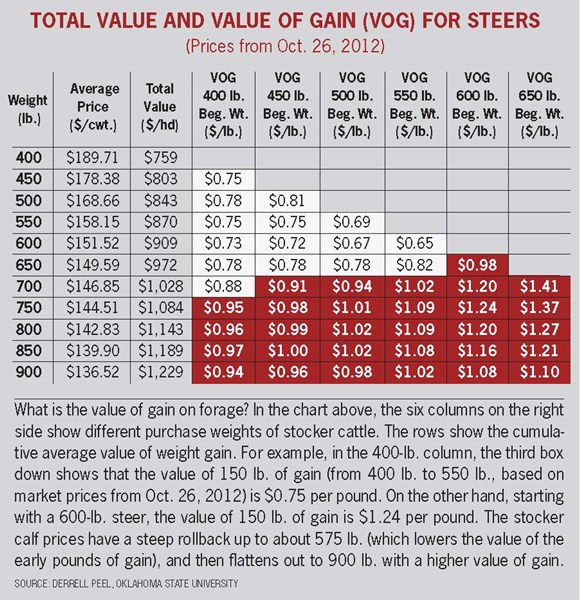Cattlemen are Forage-focused

With rising feed costs, the cattle industry looks at shifting to a forage-based production system
Missouri farmer Harry Cope’s fields of corn, soybeans and milo are his version of a feedlot. He doesn’t harvest the crop—instead, he lets the cows graze the fields. Doing this, he says, saves him money. But how?
Taking the cows to the feed rather than feeding the cows stops the cost of production at planting and eliminates the cost of feed grinding, storage, transportation and manure management.
With a grant to research skip-row planting techniques with cover crops, Cope has been experimenting with interplanting soybeans with corn to provide feed for his cattle and sheep operation.Cope staggers four rows of corn with two rows of long-season soybeans using a six-row planter. The bean pods provide mineral balance to the high-protein corn for livestock.
He also grows milo for strip grazing. The milo rows alternate with a blend of four different cover crops: warm-season grass, warm-season broadleaf, coolseason grass and cool-season broadleaf. The milo and cover crops provide 150 to 200 cow days per acre and cost less than one-third the cost of hay.
"It’s the cheapest way to winter a cow," Cope says.Not every beef producer can turn his row crops into a "forage feedlot" for cattle. However, improving forage production and increasing cattle gains on that forage can help reduce feed costs for producers and net more value.
Going to grass. Some producers are transitioning entirely to a grass-finished operation. In a sign of the times, North Dakota State University’s Dickinson Research Extension Center is taking this shift and applying it to its beef production operation. The hope is that research there will help grass finished operations become more effi cient and successful. But the transition is not quick.
"We have been working at the transition from grain fi nish to forage fi nish for several years, and it will be several more years before we will have developed rudimentary forage management strategies," says Llewellyn Manske, research professor of range science at North Dakota State University. Still working toward the goal.
"The transition from grass-raised, grain-finished to grass-raised, forage finished is not as simple as it would appear to be. Most of the traditional paradigms used to develop calves for grain finish do not apply to the development of calves for forage finish," Manske says. "Grain finish can compensate for numerous management mistakes."
Poor-quality forages do not have a place in a forage finish program, he points out. "There are no forage feeds that can compensate for management mistakes; at least we have not found any that can," he says.
The forage types and management strategies used to provide feed to growing beef animals must be selected carefully to achieve high growth rates each day. Periods of low growth rates will force those calves to be finished on grain. Manske says that the goal for a calf under this management system is to have a weight gain of 2 lb. or more per day, deposit intramuscular fat, grow to full finish weight, reach the quality grade and yield grade of its genetic potential at 18 to 20 months of age (no more than 24 months), and to be marketable within the established commercial channels alongside grain-fed beef.
"We anticipate this cost per pound of gain for forage-fed beef to be less than that for grain-fed beef. We have not achieved this goal yet," Manske admits.
The reduction in forage feed cost appears to be in the efficiencies of grazing, or harvesting, the forage types at the plant growth stages that yield the greatest weight of crude protein per acre—not at the growth stage that typically offers the greatest percent of protein.
Not an all-or-nothing adjustment. Oklahoma State University economist Derrell Peel says the industry will continue to adjust to higher feed costs by looking for ways to reduce grain feed needs. He says that doesn’t mean everyone will move to 100% grass-fed beef production. Instead, it means that cattle need to stay on pastures longer and go into the feedyards heavier
to keep break-evens in check.
The market signals will do that and provide opportunities for cow– calf and stocker operators with adequate forage, Peel explains. That is why the value of gain on forage is higher than ever before. The chart at left shows that from 600 lb. to 900 lb., the market is encouraging forage-based gains due to the high cost of gain in feedlots.
"The chart suggests that if you are only putting on 200 lb. to 250 lb. of stocker gain, it is better to start with a 600-lb. steer. The traditional 400-lb. steer will pencil out if you own it for 400 lb. or more of gain, but the fi rst 200 lb. or so have relatively low value," Peel says. Historically, we have developed a cattle feeding industry due to cheap grain, he says. "Now we need to limit days on feed due to high feed cost. We are moving back to a yearling-based feeding industry with incentives to add stocker weight up to 900 lb."








